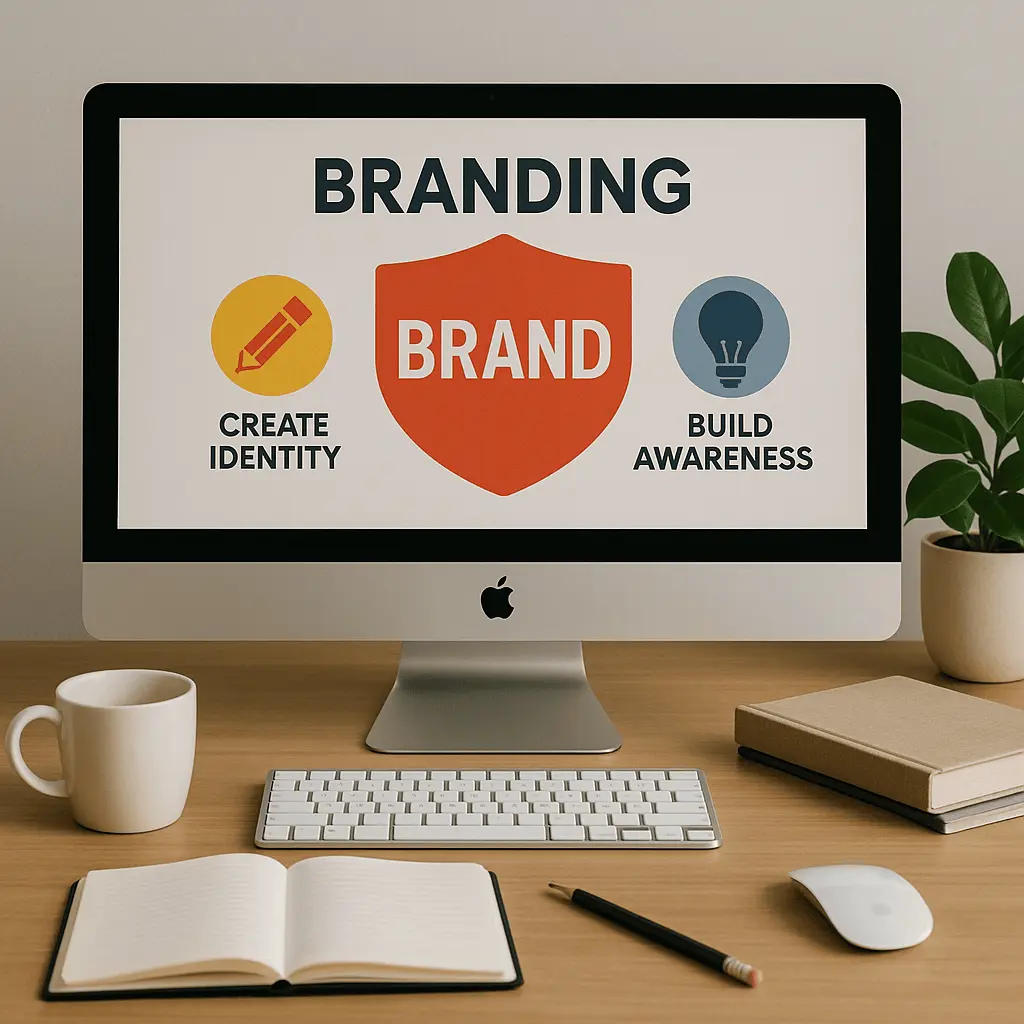Why Branding Matters: Transforming Identity into Value
Your brand is more than just a logo or color scheme — it’s the emotional and perceptual foundation that shapes how people see, trust, and connect with your business.
1. Branding Defines Your Identity in a Crowded Market
- Your brand helps customers quickly understand who you are, what you stand for, and why you matter.
- In saturated markets, distinct branding becomes your unique selling proposition (USP) — making you memorable when many others look alike.
- Without a clear brand, your business risks appearing generic, which weakens trust and diminishes impact.
2. Branding Builds Trust, Credibility & Perceived Value
- Humans rely heavily on familiarity and visual cues; strong branding contributes to a perception of professionalism and reliability.
- Customers are often willing to pay more when the brand signals quality, values, and consistency.
- Through consistent messaging and design, branding reduces friction in decision-making by giving people confidence.
3. Brand Consistency Strengthens Recognition
- Every touchpoint — website, marketing materials, packaging, social media — should reinforce the same brand identity to amplify brand recall.
- A style guide (visual identity, voice, tone) ensures your brand feels unified across platforms.
- The more a customer sees cohesive branding, the more likely they are to remember and trust you.
4. Emotional Connection Makes Customers Advocates
- People don’t just buy features — they buy stories, feelings, and values that resonate with them.
- Branding lets you communicate your mission, culture, and purpose, which can foster deeper loyalty.
- When customers feel personally connected to a brand, they become repeat buyers and often enthusiastic ambassadors.
5. Branding Amplifies Marketing Efficiency
- A strong brand makes every marketing dollar work harder — you spend less convincing and more amplifying.
- Messaging, ads, and content all perform better when built on a clear, compelling brand foundation.
- New campaigns, products, or extensions are easier to launch because the brand identity already provides structure and direction.
6. Branding Becomes a Long-Term Asset
- As your brand gains reputation and recognition, it becomes an intangible asset — something people value independently of individual offerings.
- A solid brand offers resilience during growth, competition, or market changes.
- Over time, branding contributes to higher customer lifetime value, reduced acquisition costs, and increased loyalty.
7. Core Pillars of Branding Success
-
Brand Strategy & Positioning
Define your market, competitive edge, target audience, and value proposition. -
Visual Identity & Design
Logo, color palette, typography, imagery — a visual language that embodies your brand. -
Voice, Messaging & Storytelling
The words you use, tone, and the narrative that connects your brand to people’s lives. -
Brand Guidelines & Discipline
A rulebook that keeps every team and partner consistent in how the brand is expressed. -
Experience & Touchpoints
Every interaction — from support to packaging to website — must reinforce the brand. -
Feedback & Evolution
Iterate based on real customer perception, market shifts, and performance metrics.
Conclusion
Branding isn’t a superficial cosmetic — it’s the critical structure behind how people perceive, value, and choose your business. A strong brand elevates trust, boosts recognition, increases efficiency in marketing, and becomes a strategic asset.
Oceanside Web Design helps businesses craft branding that doesn’t just look good — it works as the backbone of growth, positioning, and long-term success. Let’s tell your story the right way.

